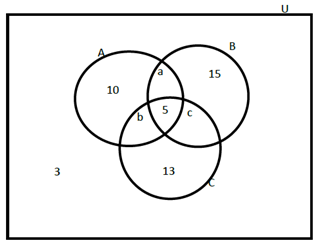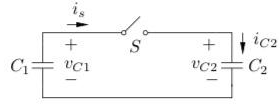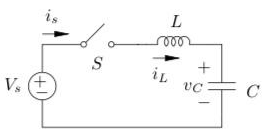Reference no: EM132370030
Problem 1 - Consider the dc circuit shown below where all of the elements are ideal. The switch is closed at t = 0. Prior to closing the switch, the capacitor voltage is zero, (i.e. vC(0-) = 0).
1. Derive and sketch vC(t), iC(t) and iS(t) for t ≥ 0.
2. What is the energy supplied by the dc voltage source (ES) and the energy stored in the capacitor (EC) from the time the switch is closed to after the switch has been closed for a long time (i.e., from t = 0- t → ∞)?
3. How do vC(t), iC(t), iS(t), ES and EC change if the value of the resistance R is made smaller and smaller until R → 0?

Problem 2 - Consider the dc circuit shown below where all of the elements are ideal. Assume that capacitance values are identical (C1 = C2 = C). The switch is closed at t = 0. Prior to closing the switch, the capacitor C1 is charged to Vs while C2 is uncharged (i.e. vC1(0-) = Vs, vC2(0-) = 0).
1. Determine the capacitor voltage and current waveforms for t ≥ 0.
2. What is the energy stored in the capacitors at t = 0-? What is the energy stored in the capacitors after the switch has been closed for a long time (as t → ∞)? Is there a difference between the stored energies at t = 0- and t = ∞? Explain.

Problem 3 - Consider the dc-excited LC circuit shown below where all of the elements are ideal. The switch is closed at t = 0. Prior to closing the switch, the capacitor voltage and inductor current are both zero, (i.e. vC(0-) = 0, iL(0-) = 0).
1. Derive and sketch vC(t) and iL(t) for t ≥ 0.
2. What is the energy supplied by the dc voltage source (ES), the energy stored in the capacitor (EC), and the energy stored in the inductor (EL) from the time the switch is closed to after the switch has been closed for a long time (i.e., from t = 0- to t → ∞)? What is the relationship between ES, EC and EL.
